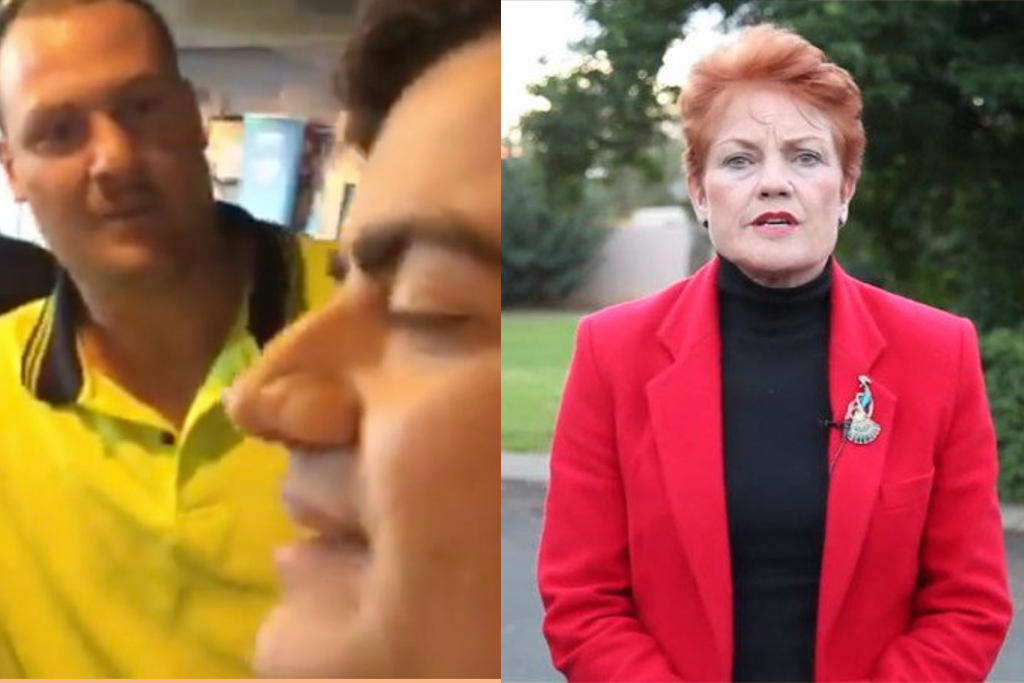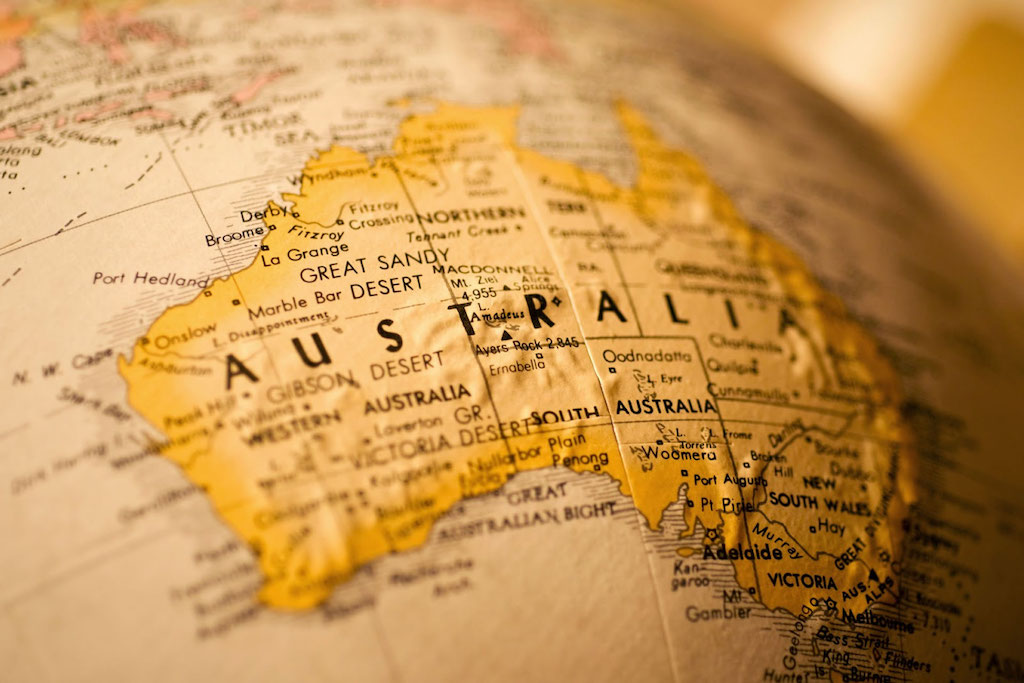The Response To The Sam Dastyari Video Is A Perfect Snapshot Of Our Racism Problem
Dastyari is one, but he is many.

The racist abuse directed at Labor senator Sam Dastyari while he was trying to enjoy a drink in a Melbourne pub last night was a shocking reminder of the discrimination and outright abuse that people of colour regularly deal with in this country, often when they’re simply trying to enjoy their lives in private.
Racism is unfortunately commonplace in Australia. A report published by the Scanlon Foundation last year found that nearly one-in-three Australians from a non-English speaking background experienced discrimination because of their skin colour, ethnic origin or religion. Nearly 60 per cent of Indigenous Australians and migrants from African backgrounds reported discrimination. According to the report, the most common example of racial discrimination was verbal abuse, such as that experienced by Dastyari.
For many people of colour racism and discrimination are regular occurrences. Dastyari’s high-profile means yesterday’s incident could serve as a wake-up to call to other Australians who are able to enjoy their lives blissfully oblivious to the undercurrent of hate that bubbles across the country, but the large swathes of the initial reaction have been infuriating and predictable.
Whether it’s the tendency within sections of the media to amplify the voices of the far-right, the incoherent articles seeking to downplay the impact of racism, or even just the outright denial that certain actions are even racist, the same pattern tends to repeat itself in the aftermath of these sorts of incidents. The reaction encapsulates the problem Australia has with owning up to its racism and it’s something that desperately needs to be challenged.
Stop Giving The Far-Right A Voice
This morning, after news of last night’s racist incident broke, a number of media organisations provided a platform to members of ‘Patriot Blue’, the far-right organisation that orchestrated the attack on Dastyari and disseminated the video.
A 'Patriot Blue' member who filmed a verbal attack on @samdastyari denies he's a racist. MORE: https://t.co/WSZsuZspMw pic.twitter.com/uu2u7yvr4d
— Sky News Australia (@SkyNewsAust) November 8, 2017
NOW | Neil Erikson, one of the members of the group who abused Senator Dastyari last night is on the line.
"What a sook. He's a politician."
— 3AW Melbourne (@3AW693) November 8, 2017
The interviews served no purpose other than to project the voices of those who attacked Dastyari, and to legitimise their perspective. It was also exactly what they were after. ‘Patriot Blue’ is a minuscule offshoot of another far-right organisation, the United Patriots Front. Their racist stunt wasn’t just about abusing Dastyari and making him feel uncomfortable. The decision to film it and share it on Facebook demonstrates that it was simply a vehicle for notoriety — a vehicle some sections of the media were happy to jumpstart.
Politicians regularly experience abuse, harassment and intimidation when they’re out in public, but it’s hard to think of many other situations where those perpetrating the abuse are given national platforms to justify their actions. But, for some reason, when that abuse is based on someone’s race, sections of the media give the perpetrators a bigger voice but allow them to make the absurd assertion that these comments actually had nothing to do with race.
Let’s be clear: telling a migrant like Dastyari to “go back to Iran”, especially in the context of this attack where he was also labelled a “terrorist” and a “monkey” is absolutely racist. It’s ludicrous that this even needs to be written down, let alone debated on national TV. But if there’s one thing Australia loves doing it’s debating the racism. “Does it really exist? Is it really as bad as people say? But it’s not really the main issue, right?”.
Australia Needs To Stop Denying Its Racism Problem
Because Australia’s media ecosystem is still so extremely white and unrepresentative of the diversity of the wider population, the discussion that follows incidents like this is a like another body blow to people of colour. Commenters who are completely removed from any experience of racism immediately pop up to share their perspectives on what is and isn’t the “real issue”, and how racism (if it actually even exists!) should be “fixed”.
It’s suffocating to see racism play out so physically, only to then be lectured by those who at best implicitly benefit from the structures of racism and at worst are complicit in propping them up. But it’s a routine that plays out again and again. If Australia had a richer and more diverse media landscape, where the voices of people from minority backgrounds were given the space and time they deserve it wouldn’t be as frustrating to see white voices dominate the discussion. But unfortunately that’s not the current situation.
One article in The Australian today bizarrely compared the attacks on Dastyari to the unwholesome nature of Pauline Hanson’s inbox, as though there was some equivalence between the two. It might seem like a harmless point, but equating physical racist abuse to mean emails sent to Hanson of all people detracts from the former’s significance. That doesn’t mean abuse directed at Hanson, or anyone else, should be excused, but it does mean that equating it to racism is deeply unhelpful.
The first defence of those who commit these kinds of attacks, or those looking to defend or dismiss them, is to deny that they’re actually even racist. And that was exactly the approach taken by Pauline Hanson.
Hanson, along with her senior advisor James Ashby, went out of her way to argue that the attacks on Dastyari were due to his personality rather than his background or religion.
“Do people have respect for Sam Dastyari? I don’t believe they do,” Hanson said. “He’s taken money from the Chinese, [they’ve] paid for his legals, and he’s done the wrong thing by the people. I think he’s a smart ass, he shows it on the floor of the parliament, and he plays up his position [as a Muslim].”
Hanson’s position here is actually quite sneaky. She’s trying to argue that because Dastyari has been involved in political controversies, criticism of him is legitimate and not based on race. Criticism of Dastyari can be — and often is — legitimate. But when it’s based on his background, race or religion it clearly crosses a line. That’s something Hanson doesn’t want to engage in.
While it might be tempting to write-off Hanson’s approach as a fringe perspective, the harsh reality is that it’s not. Many Australians seem unaware of what racism is and how it operates, likely because they’ve never experienced it. The Human Rights Commission has acknowledged this problem and started running ads to educate the public on the nature of casual racism. The fact that those ads are needed underscores the problem.
What’s The Fix?
I don’t know how to stop racism. I don’t think preventing the far-right from being handed a a huge megaphone or improving media diversity will solve the problem, but they might help shift the discussion to a better and more productive place.
The more I’ve thought about it I’ve realised that the first challenge is helping Australia understand exactly what racism is and how it includes simple things like the verbal abuse faced by Dastyari, to more insidious examples like the fact that migrants face discrimination when looking for work or trying to find a place to rent. Until then we’re going to remain trapped in this frustrating loop of denial and not make any headway.
There’s nothing inevitable about progressive social change. The resurgence of Pauline Hanson and One Nation should be a clear reminder of that. Racism won’t magically disappear “over time”. We’ll need to work at it, and that means having these conversations and arguments, even if they make people uncomfortable.
